M
I
C
R
O
S
T
O
R
Y
O
F
A
R
T
........................................................

NOW COMPLETED:

........................................................
MICROSTORY OF ART
ONLINE JOURNAL FOR ART, CONNOISSEURSHIP
AND CULTURAL JOURNALISM
........................................................
INDEX | PINBOARD | MICROSTORIES |
FEATURES | SPECIAL EDITIONS |
HISTORY AND THEORY OF ATTRIBUTION |
ETHNOGRAPHY OF CONNOISSEURSHIP |
SEARCH

........................................................



 >MICROSTORIES
>MICROSTORIES
- Richard Serra
- Martin Scorsese
- Claude Simon
- Sunshine
- Werner Herzog
- The Creation
- Marcel Duchamp
- Nino Rota
- Wölfflin and Woolf
- Hansjörg Schneider
- Kraftort Arkadien
- Visual Biography
- Schlaraffenleben
- Die Geisteswissenschaften
- The Voyeur
- Buzzword Sustainability
- Paul Verlaine
- Tao Yuanming
- New Beginning
- Seneca
- Still Lifes
- Charles Baudelaire
- Frédéric Chopin
- The Art History of Sustainability
- Wang Wei
- Solarpunk
- Historians of Light
- Lepanto
- Renaturalization
- Plates
- Snow in Provence
- Learning to See
- Picasso Dictionaries
- Peach Blossom Spring
- Picasso Tourism
- Tipping Points
- Sviatoslav Richter
- Weather Reports
- Treasure Hunt
- Another Snowscape in Picasso
- Picasso in 2023
- Dragon Veins
- The Gloomy Day
- The Art of the Pentimento
- Reforestation
- The Status of Painting
- Emergency Supply
- Punctuality
- Watching Traffic
- Zhong Kui
- How Painting Survived the 1990s
- Confirmation Bias
- Sustainability and Luxury
- Garage Bands
- Picasso and Artificial Intelligence
- Eyes of Tomorrow
- Picasso in 2023 2
- Gluing Oneself to Something
- Suburbia
- Bamboo
- Sustainability and Carpe Diem 1
- Interviews with Bruegel
- Sustainability and Carpe Diem 2
- Coffee & Sugar
- Bamboo 2
- Picasso in 2023 3
- Sustainability and Carpe Diem 3
- Cherry Orchard
- Old Magazines
- Chance
- Nick Drake
- Harlequin
- The Smartphone & the Art Book
- Atlas Syndrome
- The Kitchen
- Atlas Syndrome 2
- Consideration
- Tori Amos
- School
- Orchard Auctioning Day
- The Hundred Years’ War
- Sócrates
- Chameleon
- Nefertiti Bust
- Picasso as a Computer
- Sunflowers
- Philemon & Baucis
- Ode to the Radio
- Childhood
- Wimmelbild
- Restitution
- Nick Drake 2
- Wishful Thinking
- Sundays
- The Independent Scholar
- September
- The Fisherman by Pirosmani
- Microadventure
- Sociology
- Salvator Mundi
- Chillon
- Appassionata
- Amber
- Homer
- Berlin
- Planet Walk
- Improvisation
- Seeing Picasso
- These Nice Kids
- Robber
- The One
- The Sea Turtle
- Zoo
- Through the Hush
- Wunderkammer
- I Do Not Seek, I Find
- Shopping Mall
- Food Hamper
- The Secretary
- This Gate
- Nor Rainy Day
- House on a Hill
- Beautiful Island
- Second-hand Bookstore
- Flat
- Slap in the Face
- Serra, Wenkenpark
- Apologies
- The Bells
- Nordmann Fir
- Picasso Wanting To Be Poor
- Picasso, Pirosmani
- A Brief History of Sculpture
- 24 Sunsets
- Rusty Phoenix
- Glove
- Wintry Stanza
- A Song
- Like A Beatle
- Catching An Orange
- Solar Bees
- Permaculture

 >FEATURES
>FEATURES
- Van Gogh On Connoisseurship
- Two Museum’s Men
- Ende Pintrix and the City in Flames
- Titian, Leonardo and the Blue Hour
- The Man with the Golden Helmet: a documentation
- Un Jury d’admission à l’expertise
- Learning to See in Hitler’s Munich
- Leonardo da Vinci and Switzerland
- The Blue Hour Continued
- The Blue Hour in Louis Malle
- Kafka in the Blue Hour
- Blue Matisse
- Blue Hours of Hamburg and LA
- A Brief History of the Cranberry
- The Other Liberale in the House
- The Blue Hour in Raphael
- Who Did Invent the Blue Hour?
- Monet on Sustainability
- Velázquez and Sustainability
- The Blue Hour in Guillaume Apollinaire
- Van Gogh on Sustainability
- The Blue Hour in Marcel Proust
- Picasso and Sustainability
- The Contemporary Blue Hour
- The Blue Hour in 1492
- The Blue Hour in Hopper and Rothko
- Hopper and Sustainability
- The Blue Hour in Ecotopia
- The Hour Blue in Joan Mitchell
- Explaining the Twilight
- The Twilight of Thaw
- The Blue Hour in Pierre Bonnard
- Explaining the Twilight 2
- Picasso on Stalin
- Rubens on Sustainability
- The Salvator Mundi in Bruegel and Rubens
- The Blue Hour in Leonardo da Vinci and Poussin
- The Blue Hour in Rimbaud
- Faking the Dawn
- Frost and Thaw in Ilya Ehrenburg
- Picasso, Stalin, Beria
- Picasso, Solzhenitsyn and the Gulag
- Shostakovich on Picasso
- Hélène Parmelin in 1956
- Historians of Picasso Blue
- Picasso Travelling to Moscow 1
- The Blue Hour in Caravaggio
- Picasso Travelling to Moscow 2
- Picasso, the Knife Game and the Unsettling in Art
- Some Notes on Leonardo da Vinci and Slavery
- Picasso Moving to the Swiss Goldcoast
- The Blue Hour in Camus
- The Blue Hour in Symbolism and Surrealism
- Caspar David Friedrich in His Element
- Exhibiting the Northern Light
- Caspar David Friedrich in His Element 2
- Robert Schumann and the History of the Nocturne
- The Blue Hour in Robert Schumann
- Caspar David Friedrich and Sustainability
- The Twilight of Thaw 2
- Multicultural Twilight
- The Blue Hour in Anton Chekhov
- The Blue Hour in Medieval Art
- Twilight Photography
- The Blue Hour in Bob Dylan
- Iconography of Optimism

 >SPECIAL EDITIONS
>SPECIAL EDITIONS
- Visions of Cosmopolis
- Mona Lisa Landscapes
- Turner and Ruskin at Rheinfelden
- Painters On TV & On TV
- Spazzacamini in Art
- A Last Glance at Le Jardin de Daubigny
- The Experimental Cicerone
- A Dictionary of Imaginary Art Historical Works
- Iconography of Blogging
- Begegnung auf dem Münsterplatz
- Cecom
- Das Projekt Visual Apprenticeship
- Those Who See More
- A Fox on Seeing with the Heart
- Sammlung Werner Weisbach
- Daubigny Revisited
- Some Salvator Mundi Microstories
- Some Salvator Mundi Afterthougths
- Some Salvator Mundi Variations
- Some Salvator Mundi Revisions
- A Salvator Mundi Questionnaire
- A Salvator Mundi Puzzle
- Unknown Melzi
- Francis I and the Crown of Charlemagne
- From Amboise to Fontainebleau
- Drones Above Chambord
- Looking Back At Conques
- Flaubert At Fontainebleau
- Images of Imperial Ideology
- The Chronicles of Santa Maria delle Grazie
- Seeing Right Through Someone
- Melzi the Secretary
- Eying Glass
- A Foil to the Mona Lisa
- A Renaissance of the Cartoon
- Sketching a Family Tree
- Venetian Variations
- A Brief History of Digital Restoring
- A Consortium of Painters
- Leonardeschi and Landscape
- A Christ in Profile
- Learning to See in Spanish Milan
- A History of Gestures
- Leonardo and Josquin
- A Renaissance of the Hybrid
- Suida and Heydenreich
- The Watershed
- Three Veils
- From Beginning to End
- Connoisseurship of AI
- Twilight and Enlightenment
- The Blue Hour in Chinese Painting
- Dusk and Dawn at La Californie
- Iconography of Sustainability
- The Blue Hour in Goethe and Stendhal
- The Sky in Verlaine
- The Blue Hour in Paul Klee
- Iconography of Sustainability 2
- The Blue Hour in Charles Baudelaire
- From Bruegel to Solarpunk
- Some Salvator Mundi Documentaries
- Some More Salvator Mundi Monkey Business
- The Windsor Sleeve
- Brigitte Bardot’s Encounter with Picasso
- Art Historians and Historians
- A Salvator Mundi Chronicle
- The Salvator Mundi and the French Revolution
- The Fontainebleau Group
- The Encounter of Harry Truman with Pablo Picasso
- The Fontainebleau Group Continued
- The Windsor Sleeve Continued
- The Salvator Mundi in Early Netherlandish Painting 1
- Some Salvator Mundi Resources
- A New Salvator Mundi Questionnaire
- The Woman in Picasso
- The Yarborough Group
- Melzi, Figino and the Mona Lisa
- The Yarborough Group Continued
- A Salvator Mundi Global History
- The Salvator Mundi in Medieval Art
- The Salvator Mundi in Medieval Art 2
- The Salvator Mundi in Early Netherlandish Painting 2


 >HISTORY AND THEORY OF ATTRIBUTION
>HISTORY AND THEORY OF ATTRIBUTION
- The Mysterious »Donna Laura Minghetti-Leonardo«
- Assorted Demons of Connoisseurship
- Panofsky Meets Morelli
- Discovering the Eye of Sherlock Holmes
- Handling the Left-handed Hatchings Argument
- Visual History of Connoisseurship
- Alexander Perrig
- Connoisseurship in 2666
- What Postmodernity Has Done to Connoisseurship
- Dividing Four Fab Hands
- A Leonardesque Ambassador
- Test Cases in Connoisseurship
- A Raphael Expertise
- How to Tell Titian from Giorgione
- Louise Richter
- The Unique Property in the History of Connoisseurship
- An Expertise by Berenson
- The Book of Expertises
- An Album of Expertises
- An Expertise by Friedländer
- A Salvator Mundi Provenance
- How to Tell Leonardo from Luini
- An Expertise by Crowe and Cavalcaselle
- An Expertise by Bayersdorfer
- An Expertise by Hermann Voss
- An Expertise by Hofstede de Groot
- Leonardeschi Gold Rush
- An Unknown »Vermeer«
- An Expertise by Roberto Longhi
- An Expertise by Federico Zeri
- A Salvator Mundi Geography
- A Salvator Mundi Atlas
- The Bias of Superficiality
- 32 Ways of Looking at a Puzzle
- James Cahill versus Zhang Daqian
- Five Fallacies in Attribution
- On Why Art History Cannot Be Outsourced to Art Dealers
- On Why Artificial Intelligence Has No Place in Connoisseurship
- Salvator Mundi Scholarship in 2016
- Leonardo da Vinci at the Courts
- The Story of the Lost Axe
- The Last Bruegel
- A Titian Questionnaire
- On Where and Why the Salvator Mundi Authentication Did Fail
- The Problem of Deattribution

 >ETHNOGRAPHY OF CONNOISSEURSHIP
>ETHNOGRAPHY OF CONNOISSEURSHIP
MICROSTORY OF ART
ONLINE JOURNAL FOR ART, CONNOISSEURSHIP
AND CULTURAL JOURNALISM
........................................................

***
ARCHIVE AND FURTHER PROJECTS

1) PRINT


***
2) E-PRODUCTIONS


........................................................

........................................................

........................................................
FORTHCOMING:


***
3) VARIA

........................................................

........................................................

........................................................

........................................................

........................................................
***
THE GIOVANNI MORELLI MONOGRAPH

- The Giovanni Morelli Monograph
........................................................
MICROSTORY OF ART
ONLINE JOURNAL FOR ART, CONNOISSEURSHIP AND CULTURAL JOURNALISM
HOME
MICROSTORY OF ART ONLINE JOURNAL FOR ART, CONNOISSEURSHIP AND CULTURAL JOURNALISM A Consortium of Painters  |
See also the episodes 1 to 17 of our New Salvator Mundi History:
Francis I and the Crown of Charlemagne
The Chronicles of Santa Maria delle Grazie
A Brief History of Digital Restoring
And:
A Consortium of Painters
(5.9.-7.9.2021) This episode, the eighteenth episode of our New Salvator Mundi History, is dedicated to another strangely
neglected Leonardesque painting. This time it is the so-called Vierge aux balances in the Louvre (above). I am going
to propose: firstly that its main, or at least a main author is Giampietrino, and secondly that it was largely
painted by Giampietrino while still being supervised by Leonardo. These two propositions I am considering as being strong
probabilities, and I am also going to say why.
Beyond that I think that it is likely that another author may have contributed to this painting as well. Not Leonardo
himself, but Francesco Melzi, who must have led a life ›in parallel‹ with Giampietrino. And I am planning to dedicate
further episodes of this History to these (also strangely neglected) ›parallel lives‹. We start here with a scene in
around 1510, when both were working in close cooperation with Leonardo, and in Leonardo’s workshop. While in later
episodes we will look at later scenes, especially in an episode called Learning to See in Spanish Milan.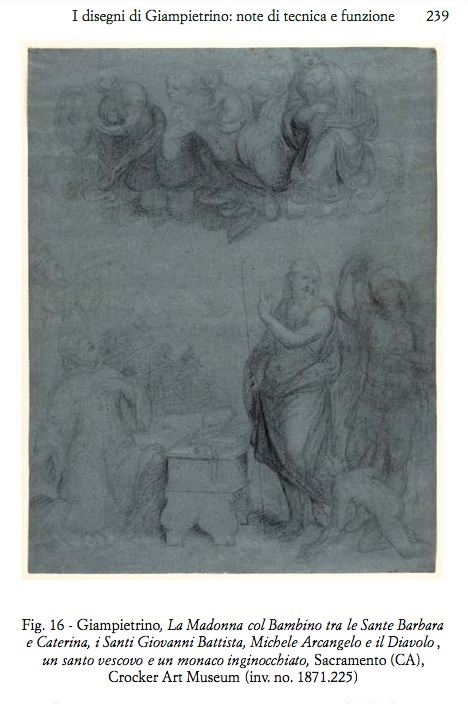
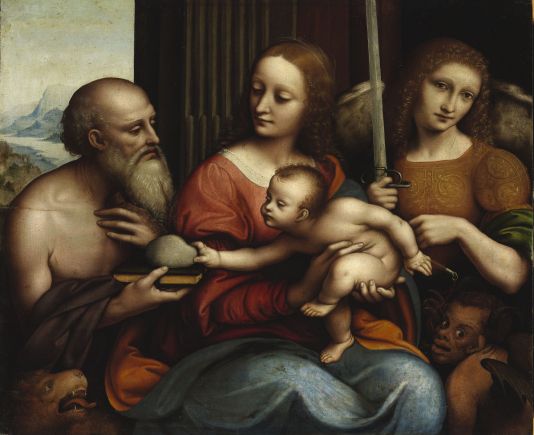
One) Why Giampietrino?
With the Vierge aux balances of the Louvre we have a picture that shows a very specific variant of a common
iconography: with the Virgin Mary and the Holy Elisabeth (mother of John the Baptist) we see two mothers, with the
Christ child and with John the Baptist as a child. This motif is common and has been popularized for example by Raphael.
But with Saint Michael Archangel (here shown with the scale to weigh the souls on Judgment Day) we have one additional
figure. And what results is a rather unique configuration and a rather unique iconography. It does not make sense to ask:
who else, in the field of the Leonardeschi, has this specific iconography. Because there is no parallel. But it does make
sense to ask: who else, among the Leonardschi, has represented – or had intended to represent – Saint Michael Archangel
with the scale? And the answer is: Giampietrino has and had.
Actually we have three reasons to immediately narrow the field if searching for the ›Master of the Vierge aux Balances‹
(while keeping in mind that the solution of this puzzle might be a plural, implying division of labour, and not the
singular of genius cult): We can narrow the field, since this is an extremly refined and thought out picture with
extremely demanding specific motifs (the scale, but also the veil of the Virgin Mary, the hand of the Christ child
grabbing the scale, the vegetation on the rock formation, modelled from light to dark, and so on). We need to look for
hands that are willing and capable to confront such challenges, mastering them also rather successfully (of course the
picture had been attributed to Leonardo da Vinci in the past). Among the Leonardeschi not everybody, for example, does
represent the motif of hair underneath a veil. And not everybody has alternative representations of Saint Michael
Archangel – but Giampietrino has. And Giampietrino, among the Leonardeschi, was one of the technically most skilled.
A drawing by Giampietrino kept in Sacramento (above; taken from: Furio Rinaldi, Raccolta Vinciana 35 (2013))
shows that this skilled and also very pragmatic master had thought about representing Saint Michael (again). And his
representation of Saint Michael in a picture kept at Budapest (picture above right: mfab.hu) shows a rather androgynous –
and hence typically Leonardesque figure, combining the rather androgynous face of a very young warrior (who could also
play the role of a David, conquering Goliath, for example) with strongly built, but not very muscular or bony, but rather
softly modelled arms.
We have to bear in mind that ›Giampietrino‹ means also ›Giampietrino‹ workshop (the master ›joined forces‹, for example,
with a Giovanni Francesco Boccadoli in 1517), and a recently auctioned variant of the Budapest picture ›in the manner of
Giampietrino‹ brings even back the scale (picture below: artnet.com).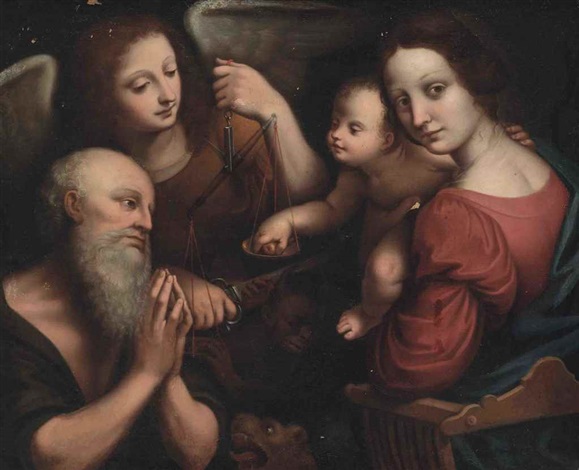

And we have two more reasons to chose the authorship of Giampietrino as our primary working hypothesis: as skilled as
Giampietrino was – he is often rather weak in representing fingernails (and this is a peculiarity that also shows in the
Louvre picture). Secondly: the Christ child in an undoubted Giampietrino painting on location (the church of the Italian
community of Ospedaletto Lodigiano) and dated c. 1515 is definitively a relative of the two children in the Louvre
picture. Even if the altar panel at Ospedaletto Lodigiano (below; along with again the Sacramento drawing) definitively shows a
Virgin Mary, more precisely: the Virgin Mary of the Virgin of the Rocks (Louvre version), the Christ child has
nothing of the way Leonardo da Vinci represented children: while Leonardo has children rather pensive and serious (often
also a bit clumsy), Giampietrino has children livelier, and if perhaps not exactly frolicking around, closer to
frolicking around (while, of course, both artists have at the same time allusions to the Passion). Giampietrino children
have faces that one can easily imagine grimacing, and in addition to that: someone has given them a more specific
haircut: someone must have commanded at the hairdresser: ›leave a precise triangle of curls at the front, then rather
short on the sides‹. And one can imagine the two children in the Vierge aux balances frolicking around at the
hairdresser and grimacing, while Leonardo himself tends to represent the seriousness of children, and has them not
frolicking around (if he does that a little, as in the Saint Anne, it is a more dreamy and certainly not a grimacing
playing around – the comical being rather avoided in Leonardo’s religious pictures.

Two) A World of Hybrids
All of the above makes me propose to think of Giampietrino as one or as the main author of the Vierge aux balances,
and the career of Giampietrino can be roughly be divided into two periods of time, with the year of 1511 probably being
the decisive cesura – a watershed: we had seen earlier that around 1511 Giampietrino is being documented as a member of a
consortium of painters, headed by Bramantino (and Zenale), and whatever the exact nature and success of this undertaking might have been –
we see Giampietrino embarking on a career as a very prolific, pragmatic and above all: autonomous painter, heading his
own prolific and probably very successful workshop.
Prior to 1511, prior to being autonomous, Giampietrino must have been very close to Leonardo. And as to all of these two
(or if one likes: three) periods of time Giampietrino can also be described as working within a consortium of painters.
Because also Leonardo’s workshop could be described as being a consortium of painters, with Leonardo heading it, but with
others contributing to that consortium – by realizing Leonardos ideas. The consortium headed by Bramantino followed that
period, with Giampietrino being a member; and also Giampietrino as the master of his own workshop, headed such
consortium, with other painters, such as Boccadoli (and probably others) working for him.
It might be natural that Leonardo scholarship has and always has had a bias towards the cult of the unique genius. But
all the more important it is to ask, for the sake of realism, how much division of labour, how much ›impurity‹,
›hybridity‹, could also be part of that story. In the context of our New Salvator Mundi History we now have seen
several times that close inspection of singular cases (such as of that of the Salvator Mundi itself, of course, but also
that of the Columbia portrait), led us to think more of hybrids, of cooperation, of collaboration, instead of the purity
of singular genius. We should, to counter the bias towards genius cult, rather be prepared to always and firstly ask for
the ways artists may have cooperated. If such awareness for ways of cooperation would exist, we might also be prepared to
spot the clues for singular paintings possibly being hybrids. And no matter if we place the Vierge aux balances
in the period after 1511 – the Louvre proposes a date of c. 1510 – or into the period prior to 1511, we would face the
possibility that this painting was and is the result of cooperation, division of labour, and hence that it would be
hybrid, because, no matter the date, it must have been produced within the context of a consortium of painters. The
question, thus, would rather be: which one?
I think that close observation must lead one to think of this painting having been produced under the supervision of an
extremely demanding and pedantic master, while at the same time we can also observe executing hands rather successfully
meet the demands of this extremely pedantic master. While in some respects not completely meeting them. The Vierge aux
balances, in my view, can be seen as the work of extremly ambitious and skilled pupils, who, on the other hand and as
we will see now, did realize very thought out concepts, but in the end did not realize them to full perfection. Two
pupils, in my view, did go very far in realizing perfectionism, but not, as some details do show, to the very end. And
this, as we will see now, along with the possibility to date the painting more precisely, at least hypothetically, allows
us to say that this painting was created (largely by Giampietrino) while the executing hands were still being under
Leonardo’s very demanding supervision.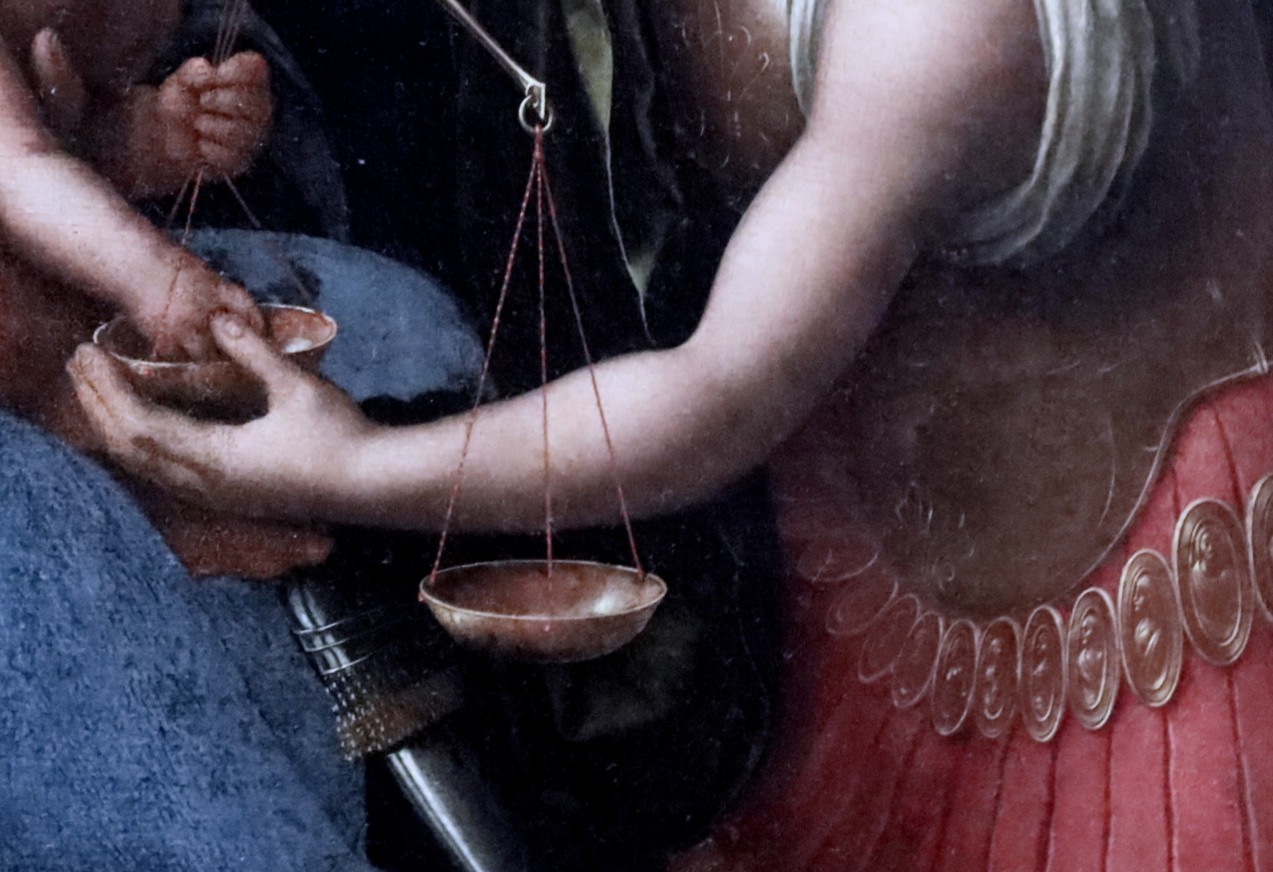
Three) A Peculiarity: Armour, Sculpture and a Hidden Gallery
The Vierge aux balances shows one peculiarity that not only makes it a Renaissance painting, but in some sort the
embodiment of a Renaissance painting. Because it does show the fascination (Roman) antiquity had for the Renaissance –
in that it shows the specific fascination Roman armour had for Renaissance artists.
Saint Michael Archangel is shown, as he often is, in armour inspired by Roman armour. But the peculiarity (that also
allows us to date the picture more precisly, as also to link it with specific other works of art that may have inspired
it) is something else: it is about armour combined with art, and here, very specifically, with a ›belt‹ in shape of
a ›portrait gallery‹ (see above; picture: flickr.com / Jean Louis Mazieres; Detail from). What may appear as a belt at
first sight, turns out to be, at close inspection, a chain of oval portrait badges. I don’t know if critics have realized
this before, because it only shows in good images (or in front of the original). And we face, as soon as we have realized
this ›portrait gallery‹ being part of the Louvre picture, numerous questions. But before adressing these questions, let’s
briefly review some examples of paintings showing (fancyful) armour and also ›galleries of faces‹ being part of such,
because by doing that we will realize what is special about the Vierge aux balances, and particularly about the
armour shown in it. Because usually belts on surcoats or belt-like ornament structures showing faces simply line up
stereotypical faces or animal symbols, as in the two examples I have chosen (Giorgione; Sodoma).

And here the details (pictures: artsandculture.google.com for Giorgione; flickr.com / Raffaele Pagani for Sodoma)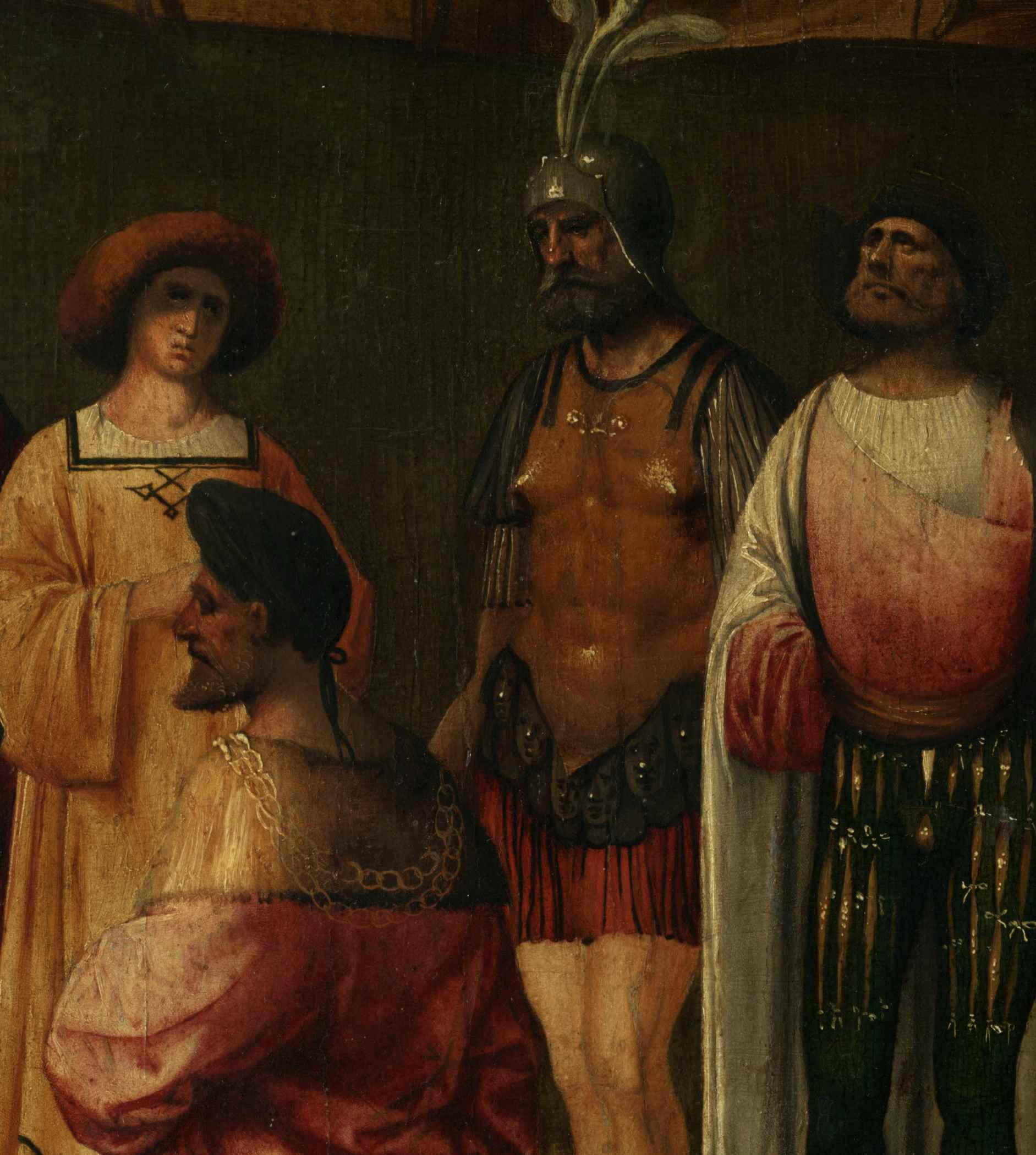
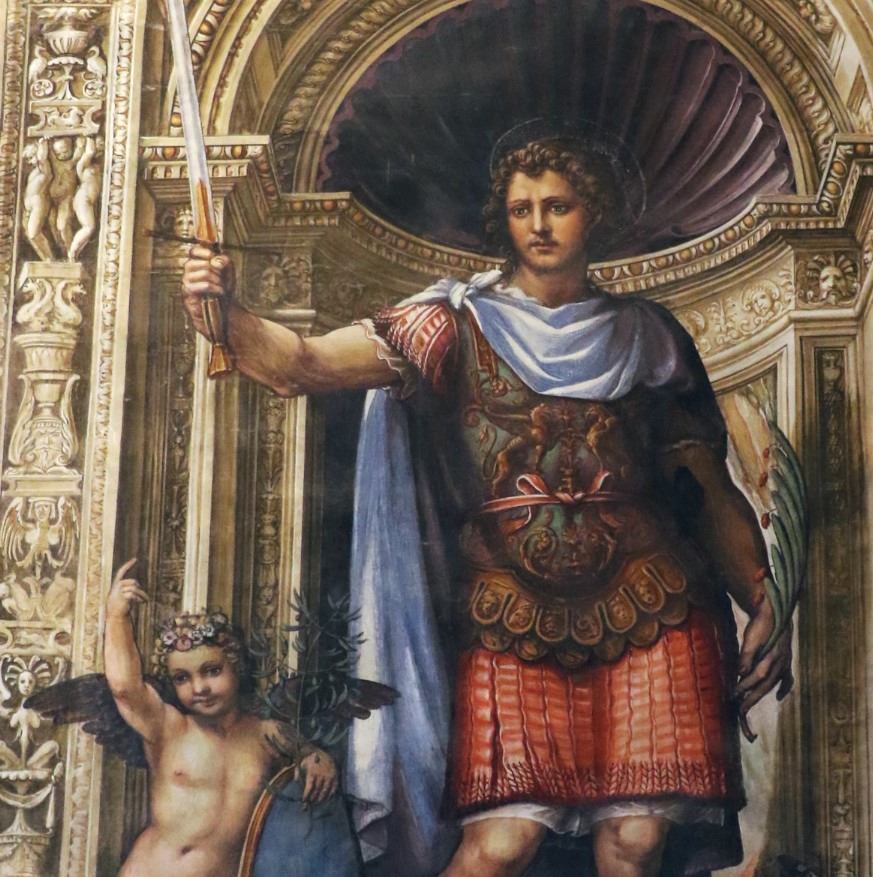
The ›portrait gallery‹ as being part of the Saint Michael armour in the Vierge aux balances, is different, for its
showing very sculpture-like individualized ›portraits‹, which probably are no portraits, but rather comparable with the
images of Saints or Evangelists as being part of church interiors (wooden choir stalls; fine art as being part of crosses
etc.; see Malaguzzi Valeri for that, with rich materials). And there is one specific sculpture that Leonardo, in all
probability has known, that is relevant for the Vierge aux balances: it is the warrior being part of the funeral monument for
Andrea Vendramin by Tullio Lombardo (picture below left: William Henry Goodyear; below right: from Syson/Cafà 2014)).
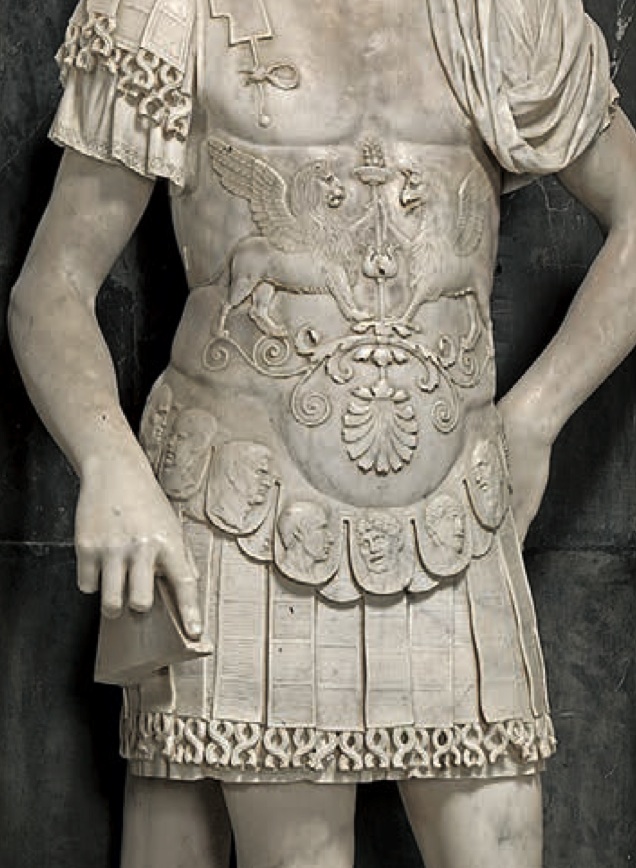
And we have more than one reason to link that particular sculpture with the Louvre picture:
First of all Tullio Lombardo executed, with the monument, a commission that initially had been given to Verrocchio (and
Lorenzo di Credi). But Verrocchio died, and Tullio completed what Verrocchio had begun (the monument, not the particular
warrior sculpture). Leonardo might have had a reason to look at it in Venice. But more important: as Pietro C. Marani has
argued (see Marani 2005, p. 251ff.) Leonardo must indeed have looked at the warrior sculpture in particular, since a
drawing by Leonardo may have been inspired by the warrior (p. 255). Marani sees the influence of Tullio Lombardo’s
sculptures on Leonardo in 1508-10 (p. 259). And based on that we may hypothetically also date the Vierge aux
balances, indirectly showing the influence of Tullio Lombardo, in terms of the ›belt turned portrait gallery‹. In other
words: the Louvre may be right in dating it c. 1510. What might be accurately observed Roman armour style in Tullio,
turned to be (probably) Christianized iconography, suitable for a Saint Michael, hence I am thinking of the visual
culture of Milanese church interiors rather than of the showy armour of a Roman aristocrat, whose armour might also have
had apotropaic functions, which would make less sense in relation to the figure of the archangel. But further scholarship
may find out what exact ›portraits‹ we can see here (if, lacking high resolution images, we can see them at all).
Four) Another Author?
The Vierge aux balances shows a refinement and ambition, not typical for the later work of Giampietrino (if we accept
him as the main or a main author). I would interpret this as the perfectionism demanded by a hypercritical supervisor
and the ambition developed by an ambitious pupil, eager to meet the demands of a hypercritical supervisor. Thus it would
make perfect sense to place the picture into the period of Giampietrino working close to and under the supervision of
Leonardo da Vinci. But the perfectionism was not a total one, and it was also a somewhat autonomous one, because a
hypercritical supervisor would not have allowed the rather odd fingernails (as already mentioned above). And another
peculiarity, having again to do with the ›belt turned portrait gallery‹, points to a perfectionism less excessive than
one would expect from Leonardo himself.
Because we can look frontally at one portrait badge and can see that it is oval – while our eye turning left become aware
of shapes that, although we can only see them from the side, must be round, and not oval. And this does not make sense,
and seems to be rather due to a lack of reflection than due to excessive perfectionism.
And also the vegetation: since on the rock formation we become aware that there could be a tree, but our eyes turning
again left realized that it only can be a bush, since a sort of grass restores a sense of dimension. This incoherence, as
the ovals turning round seem to be another incoherence, one would not expect either: and this I would interpret as the
work of ambitious pupils going very far, as far as a sense of quality is concerned, but still showing also some
negligence, an unexpected partial negligence on that level of perfectionism, that also makes one wonder if the ambition
was a bit forced (or the result of competition). And in the case of Giampietrino, as said, it was later given up.
And Giampietrino, in his situation as an ambitious pupil of Leonardo, was not alone. Actually we have no information at
all as to his relation with Francesco Melzi was. But there must have been some kind of relation, because both were, or
must have been very ambitious pupils, willing to meet the demands of Leonardo. Were they rivals? We simply do not know.
It could also be that they were competitors, but also friends. And the Vierge aux balances could have been a friendly
collaborations between Melzi and Giampietrino.
Certainly one could also wonder if other hands may have been involved. But would it make sense to think of Boltraffio
for example? Who was not an ambitious pupil anymore in around 1510. The choice is limited, and I think the only two names
that fit in with the perfectionism and the refinement of ambitious pupils on the one hand, and the partial negligence on
the other hand are Giampietrino and Melzi.
I am naming Melzi, being aware that, lack of undoubted reference pictures, we cannot recognize him on the basis of
exclusive Melzi features. But I am thinking of the also not perfectly convincing figure of the Virgin Mary (her
appearance is somewhat clumsy, and her neck seems to be too broad as in the Salvator Mundi; while the veiled hair
demands very high painterly skills).
Thus I would – only hypothetically – add that Melzi also could have contributed to this picture. Perhaps the Virgin Mary,
perhaps the nuanced vegetation (with aerial roots, and partly recognizable plants) and perhaps the background. We cannot
know that for sure, but a frame we may establish. And this frame should include the possibility that the painting is
another hybrid. Since Giampietrino may have worked along side with Melzi, as they lived parallel lives in the circle of
Leonardo, being part of the most inner circle. And it is curious, and actually a sort of scandal, that, as far the most
close associates of the central master are concered, we do know so very, very little. Our knowledge, more or less, is
limited to hypotheses, but such hypotheses are equally important as facts to structure our knowledge. We only have to
take care that such hypotheses do not suddenly turn into alleged facts, because we would like – most eagerly – something
specific to be true.

Five) Conclusions
All in all I think that the Vierge aux balances can reasonably be ascribed to Giampietrino as one or the main author,
to Giampietrino while still being supervised by Leonardo; and that the picture also convincingly can be dated on the
basis of its relation to the work of Tullio Lombardo and Leonardo’s reception of it. In addition to that the picture fits
into the context of Leonardo’s workshop as a consortium of painters, as well as into a constellation of very skilled and
very ambitious pupils of Leonardo, willing and largely being able to meet the demands of a hypercritical supervisor,
while also being autonomous to some degree. Last but not least I am thinking that the case discussed here might serve as
a paradigm as to how not only the history of Leonardo’s workshop should be written, but also as to how future oeuvre
catalogues should be designed, with the most crucial concept of hybridity being central as to the conception of such
catalogues.
Selected Literature:
Pietro C. Marani, Leonardo. Das Werk des Malers, Munich 2005
Luke Syson / Valeria Cafà, Adam by Tullio Lombardo, in: Metropolitan Museum Journal 49 (2014), p. 8-31
Francesco Malaguzzi Valeri, La corte di Lodovico il Moro. Gli artisti Lombardi, Milano 1917

The Bottega of Leonardo da Vinci
The picture of the bottega of Leonardo da Vinci is not as blurred as one might imagine (for details see Seidlitz 1935, p. 530; Marani 1998). We will focus here on the early and middle years (up to 1512), and not on the late years, and one might begin with saying that with Boltraffio and Marco d’Oggiono we see two figures enter the orbit of Leonardo at the beginning of the 1490s that we believe to know rather well. We also see Salaì enter the orbit, at a very young age, and we have, in addition to that, a couple of names, names of figures that we do not seem to know very well, or not at all (a Giacomo, Giulio Tedesco, Galeazzo). Last but not least we have the Giampietrino problem: Giampietrino enters the scenery, but it is a matter of controversy (as far as this question is debated at all), when, since also Giampietrino is still very young.
It is noteworthy that Marco d’Oggiono, already at the end of the 1480s, seems to have had an own apprentice, and that Marco and Boltraffio did create the Pala Grifi together (a picture today in Berlin; picture above), even before Leonardo began to work at The Last Supper in 1495. Due to the work of Janice Shell and Grazioso Sironi we today do know more about Francesco Galli, also called Francesco Napoletano, who did die in Venice as early as 1501. One might imagine that Galli went to Venice with Leonardo in 1501, and if Galli, during the 1490s, for example might have cooperated with Marco, we would have found an interesting perspective: since, if only one single picture of the Marco group would be associated with Francesco Galli/Francesco Napoletano, we would have a picture with hand option 2, a picture that must have been created before Galli died in 1501. Which would mean that hand option 2 must have existed early, and my theory of the pentimento in version Cook as a mere switching from (preexisting) option 1 to (preexisting) option 2 would be positively proven as well as the theory of the pentimento supposedly showing the creative energy of genius (changing his mind) would be definitively falsified.
Brief: in the 1490s Leonardo mentions once that he had paid ›two masters‹ (probably Marco and Boltraffio) for two years; and once that he had six bocche to feed (probably again Marco, Boltraffio, plus Salaì and some of the unknowns).
Below a rather early Marco picture (according to Janice Shell), the Young Christ Blessing of the Galleria Borghese:
And here is a picture (not the only known picture) by Protasio Crivelli, formerly the apprentice of Marco d’Oggiono (picture by Sailko; the date appears to be 1498; location: Naples, Museo di Capodimonte):
In 1501 (3.4.) Pietro da Novellara informs Isabella d’Este that Leonardo seems to live ›from day to day‹ (see Marani 1998, p. 14). And he has seen Leonardo intervening from time to time in portraits done by two of his garzoni (»fano retrati«). But who are these, and which portraits are these (if this would have been about a Isabella d’Este portrait, Pietro would have noted; and after the Sforza had been expelled, portraits of court ladies and courtiers made no sense)? After having written on the picture of a young woman in the Columbia Museum of Art in one of the last episodes, I would now suggest the following:
Leonardo might have done a portrait of a Sforza court lady in the early Milanese years (and still in the Florentine portrait style), a portrait in terms of a drawing or a cartoon. He might have begun also a painting, but since the Sforza court got expelled and exiled after the French invasion, he might not have finished such portrait. He might instead have used it for the instruction of his garzoni: the Columbia picture might have been the one begun by Leonardo (as he seems to have begun portraits with the face, as later in the Mona Lisa), a picture that he might have had a pupil finish, with him retouching it again, adding some lustre. The picture in a private Russian collection might be a second version that he had a pupil repeat (after the first version and the drawing, respectively the cartoon). The Columbia picture shows much gusto for the grotesque, the second version less so, but still to some degree. Thus we would see pictures that have their origins in the first Milanese period (and even in the early Florentine period), but were actually done later (after 1500). And Leonardo might have had a hand in the Columbia picture whose head with the hair as well as the ornated hair net superbly being modelled into the dark is of exquisite quality (as also a single one pearl is, while other pearls are rather mediocre as also the bust and the modelling of the dress is). We see, as I have attempted to show in episode 13, two pictures that fit into the context of Leonardo’s thinking and doing rather than into the context of Boltraffio’s autonomous work: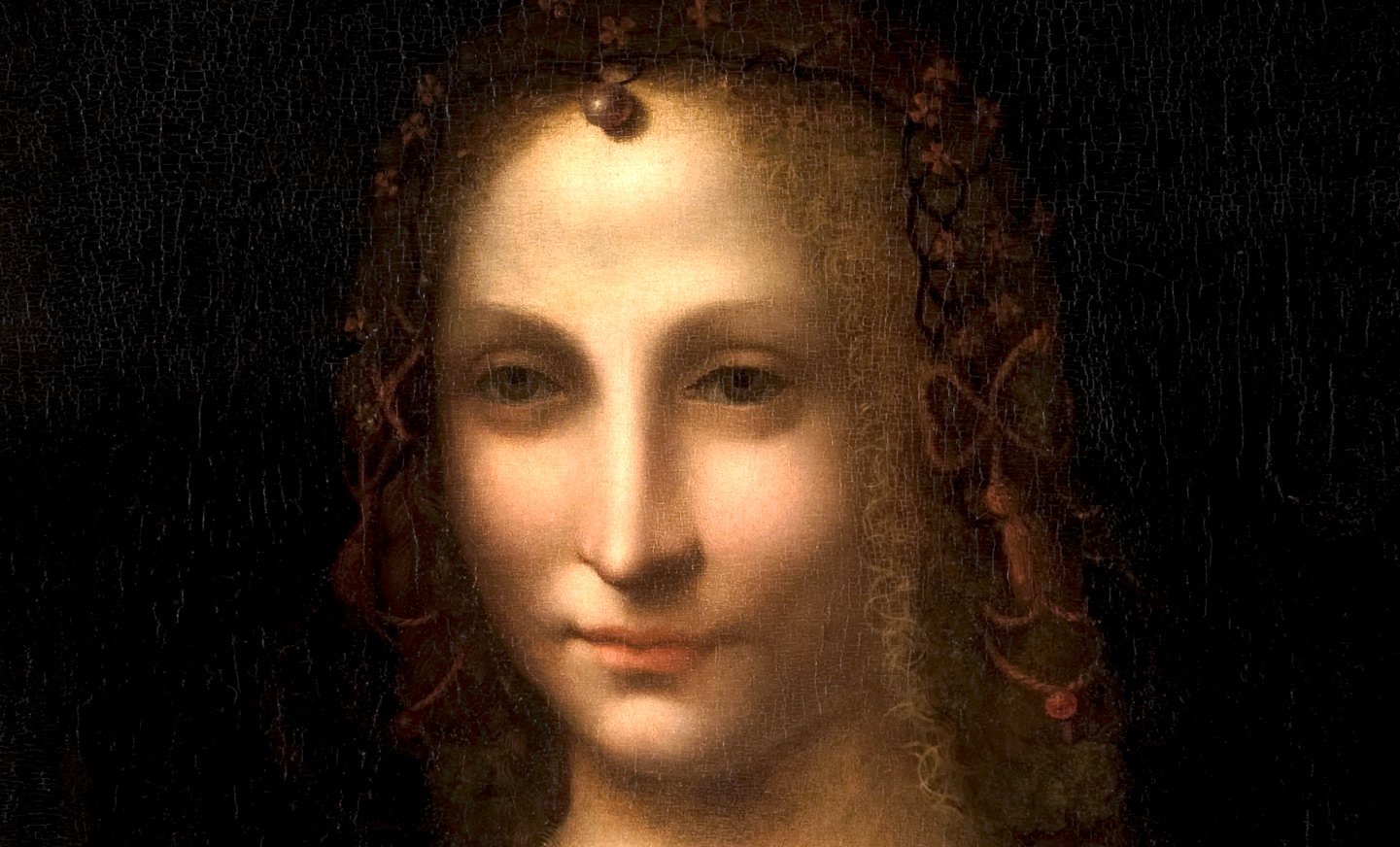
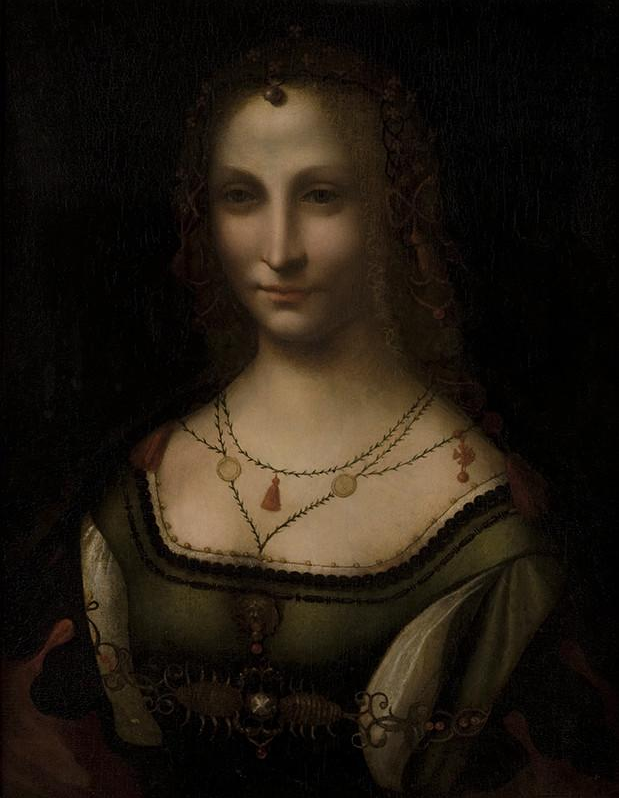
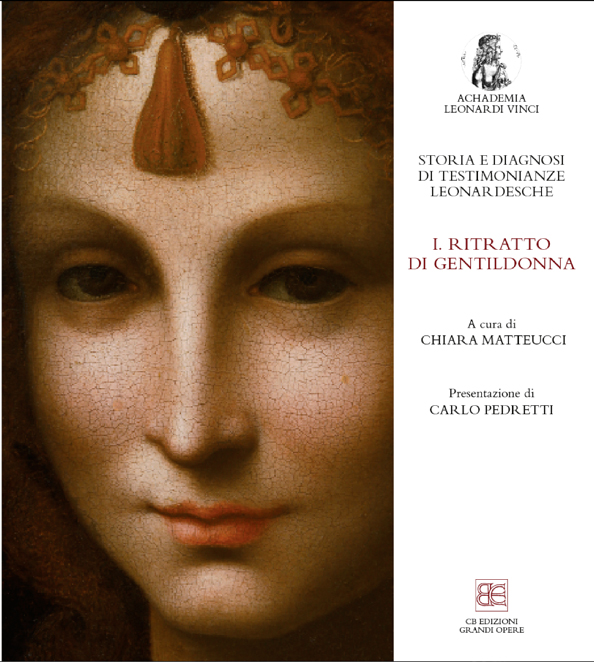
In 1504 a Jacopo Tedesco, in 1505 a Lorenzo (di Marcho) enter the orbit of Leonardo.
In around 1505 Fernando Yáñez enters the orbit of Leonardo, helping him with the Battle of Anghiari (as also does Riccio della Porta). Yáñez cannot be the author of the Prado Mona Lisa, if the Louvre Mona Lisa was finished only years later, since the dates (showing that Yáñez was active in Spain after 1506) do not allow to postulate it. In works of Yáñez done in Spain, however, we find echoes of Leonardo’s works (see the example below).
Around 1507 Francesco Melzi becomes a pupil of Leonardo (and also a sort of secretary).
In 1511 (or even earlier) Giampietrino is an autonomous master.
In 1511 Salaì seems to have created a (signed and dated) picture of Christ:
In around 1511 we see Marco, Boltraffio, Giampietrino and – Giovanni Agostino da Lodi in close contact, not only because we have a source indicating exactly that – we also have pictures indicating exactly that, and one of these pictures seems to be even dated (but the ›date‹ – ›XII‹ – is rather referring to the ›age of Christ‹):
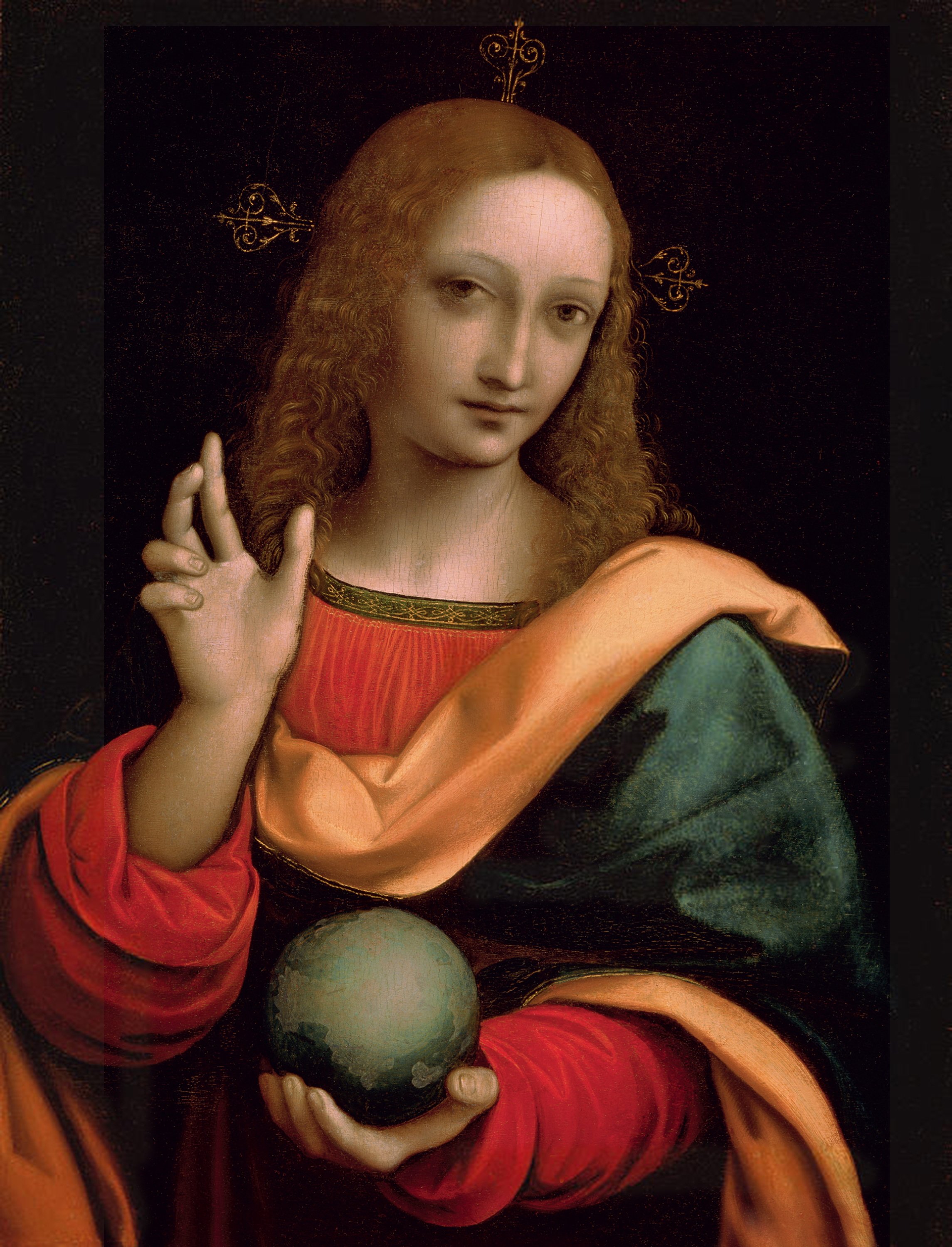
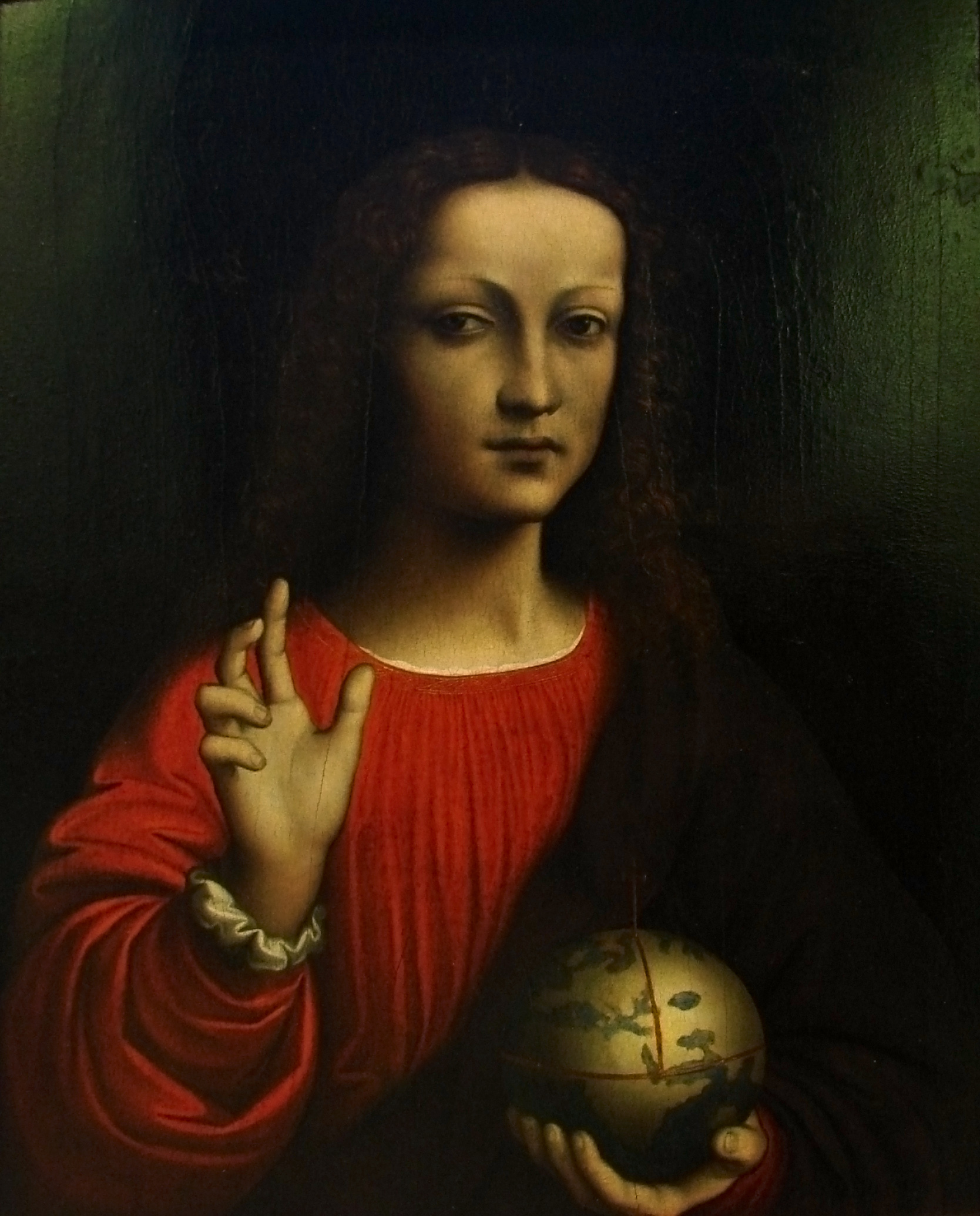
The Prado Mona Lisa (below) was probably begun at the time Leonardo also started reworking or completing the Louvre Mona Lisa, probably due to Giuliano de’ Medici wishing so, and hence perhaps in around 1511/12.
In around 1517 Marco d’Oggiono is cooperating with Giovanni Agostino da Lodi (see Shell, p. 173).
***
1516: Paolo Emilio, Italian-born humanist at the court of Francis I, publishes the first four books of his history of the Franks; death of Boltraffio.
1517: Leonardo da Vinci, with Boltraffio and Salaì, has come to France (picture of Clos Lucé: Manfred Heyde); 10.10.2017: Antonio de Beatis at Clos Lucé
1517ff: Age of the Reformation; apocalyptic moods; Marguerite of Navarre, sister of Francis I, will be sympathizing with the reform movement; her daughter Jeanne d’Albret, mother of future king Henry IV, is going to become a Calvinist leader.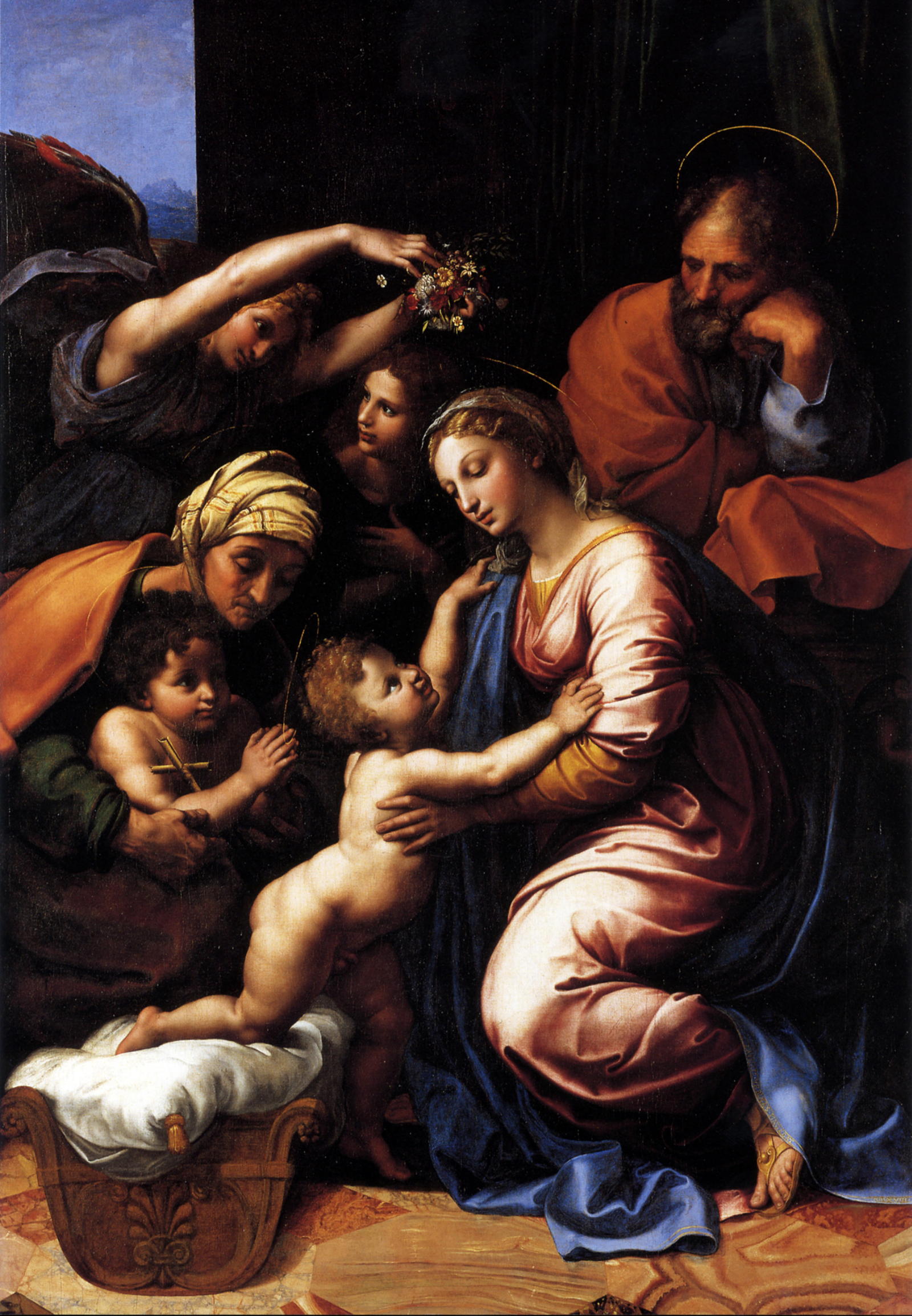
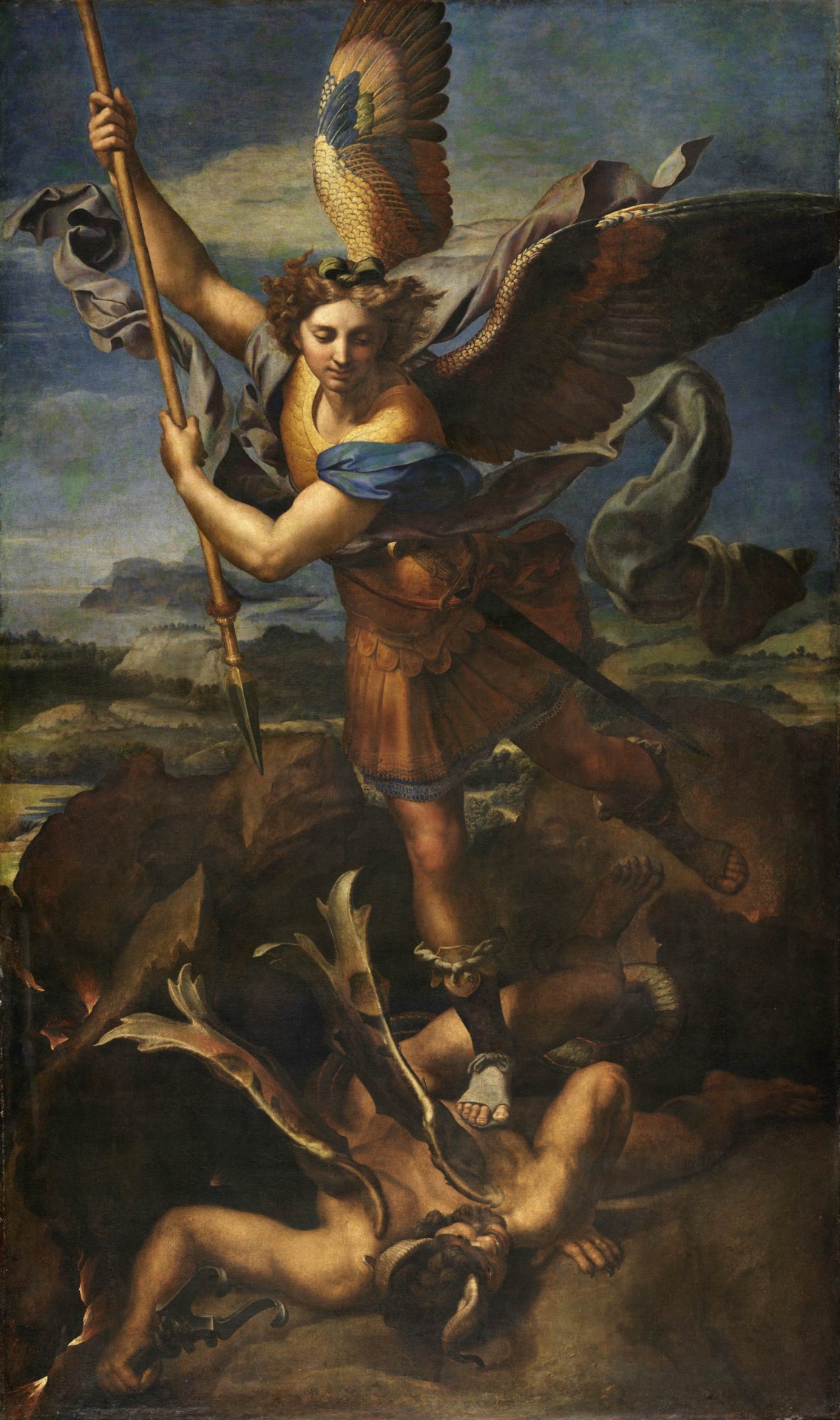
1518: the Raphael workshop produces/chooses paintings to be sent to France; 28.2.: the Dauphin is born; 13.6.: a Milanese document refers to Salaì and the French king Francis I, having been in touch as to a transaction involving very expensive paintings: one does assume that prior to this date Francis I had acquired originals by Leonardo da Vinci; 19.6.: to thank his royal hosts Leonardo organizes a festivity at Clos Lucé.
1519: death of emperor Maximilian I; Paolo Emilio publishes two further books of his history of the Franks; death of Leonardo da Vinci; Francis I is striving for the imperial crown, but in vain; Louise of Savoy comments upon the election of Charles, duke of Burgundy, who thus is becoming emperor Charles V (painting by Rubens).
1521: Francis I, who will be at war with Hapsburg 1526-29, 1536-38 and 1542-44, is virtually bancrupt.
1523: death of Cesare da Sesto.
1524: 19.1.: death of Salaì after a brawl with French soldiers at Milan.
1525: 23./24.2.: desaster of Francis I at Pavia. 21.4.1525: date of a post-mortem inventory of Salaì’s belongings.
1528: Marguerite of Navarre gives birth to Jeanne d’Albret (1528-1572) who, in 1553, will give birth to Henry, future French king Henry IV.
1530: Francis I marries a sister of emperor Charles V.
1531: death of Louise of Savoy; the plague at Fontainebleau.
1534: Affair of the Placards.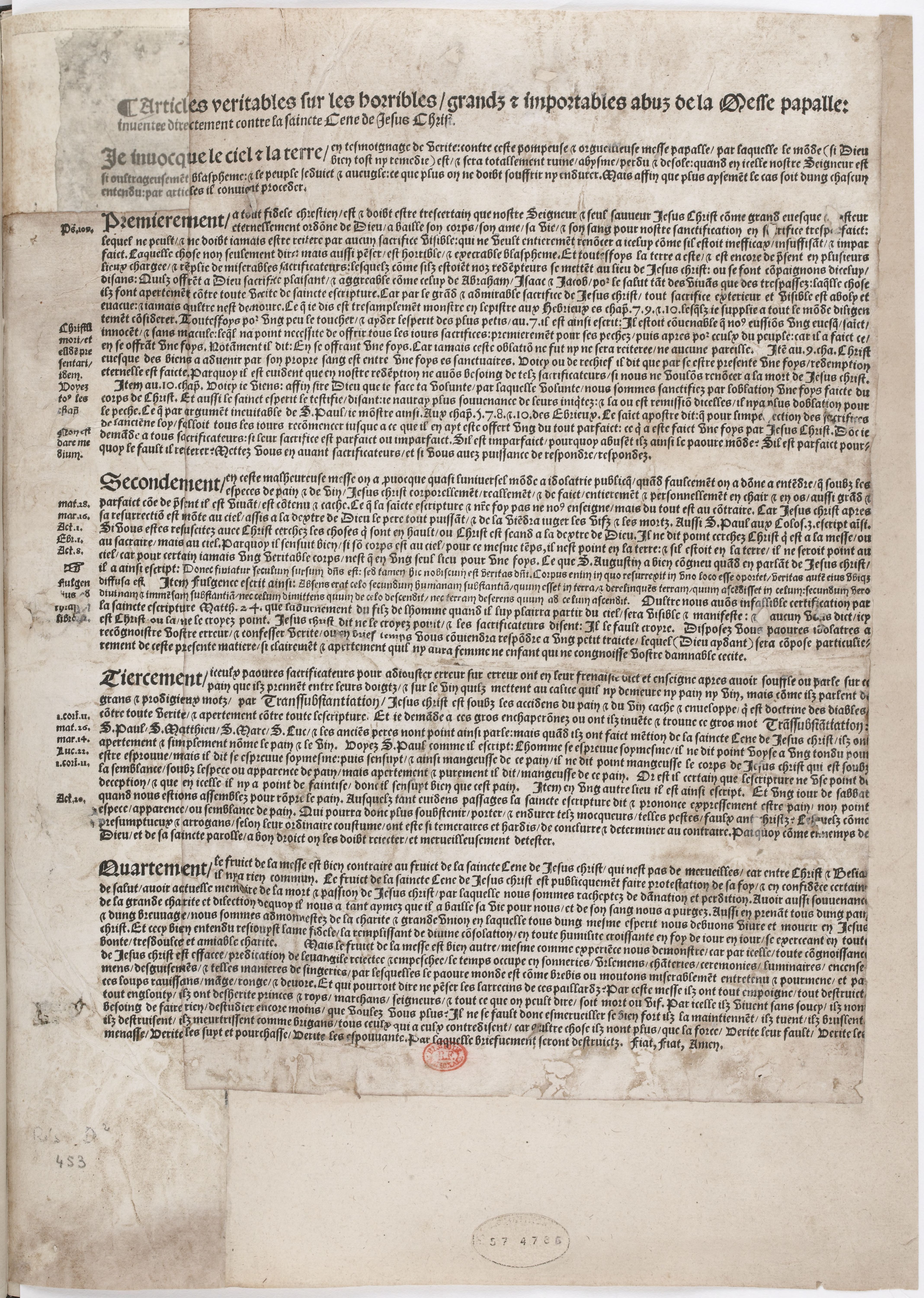
1539: the still unfinished chateau of Chambord is being shown by Francis I to Charles V.
1540s: the picture collection of Francis I being arranged at Fontainebleau.
1544: January: Marguerite of Navarre sends a letter of appreciation to her brother, king Francis I., who has sent her a crucifix, accompanied by a ballade, as a new year’s gift.
1547: death of Francis I.
1549: death of Marguerite de Navarre; death of Giampietrino.
1553: Jeanne d’Albret gives birth to Henry, the future French king Henry IV and first Bourbon king after the rule of the House of Valois.
1559: publication of the Heptaméron by Marguerite de Navarre.
1562-1598: French Wars of Religion.
1570: death of Francesco Melzi.
1589: Henry, grandson of Marguerite de Navarre and grand-grandson of Louise of Savoy, but by paternal descent a Bourbon, is becoming French king as Henry IV.
2015: an exhibition at the Château of Loches is dedicated to the 1539 meeting of king and emperor (see here).
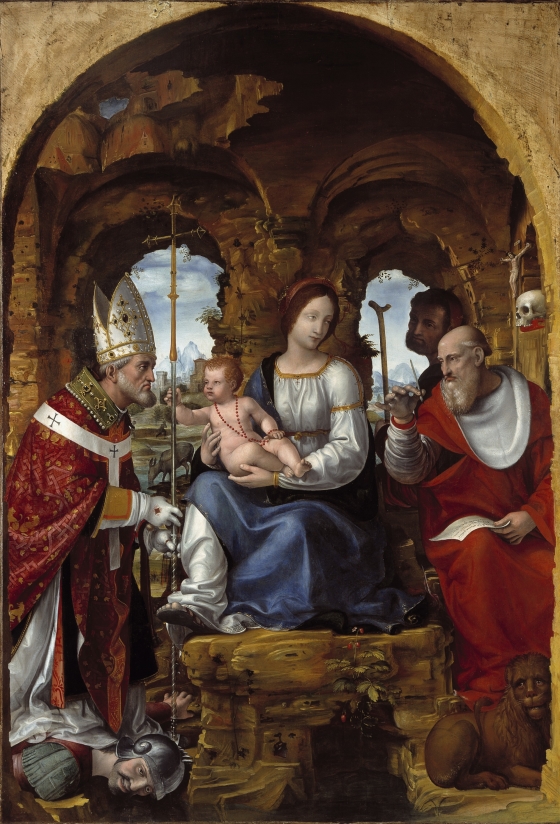
Leonardo’s one seminal contribution to landscape painting was the rocky landscape allowing to delve into a meditation on the Immaculate Conception of the Virgin Mary. A type of at the same time artificial, meditated and on the other hand very realistic natural environment, rendered also to relate to the experience of narrowness vs. open space (with the ›windows‹ within the rock formations), warmness vs. coldness, high vs. low, dark vs. bright, and so on, and all this condensed within narrow pictorial space. The dogma of the Immaculate Conception, however, was disputed, and pragmatism of artists must have been demanded, if, in some cases, its symbolism was to be rendered or – to be avoided, depending on the wishes of commissioners. Such controversial dogmatism might have resulted with artistic pragmatism, and such might also have led to the landscape of rocks turning into solid architecture. And with Zenale’s spectacular Denver panel (picture above: denverartmuseum.com) we will discuss Leonardeschi & Landscape in the next episode of our New Salvator Mundi History. Below pragmatic Giampietrino, who turned the rock landscape into a house, while keeping a window, opening the view into actual landscape.
See also the episodes 1 to 17 of our New Salvator Mundi History:
Francis I and the Crown of Charlemagne
The Chronicles of Santa Maria delle Grazie
A Brief History of Digital Restoring
And:
MICROSTORY OF ART
ONLINE JOURNAL FOR ART, CONNOISSEURSHIP AND CULTURAL JOURNALISM
HOME
© DS